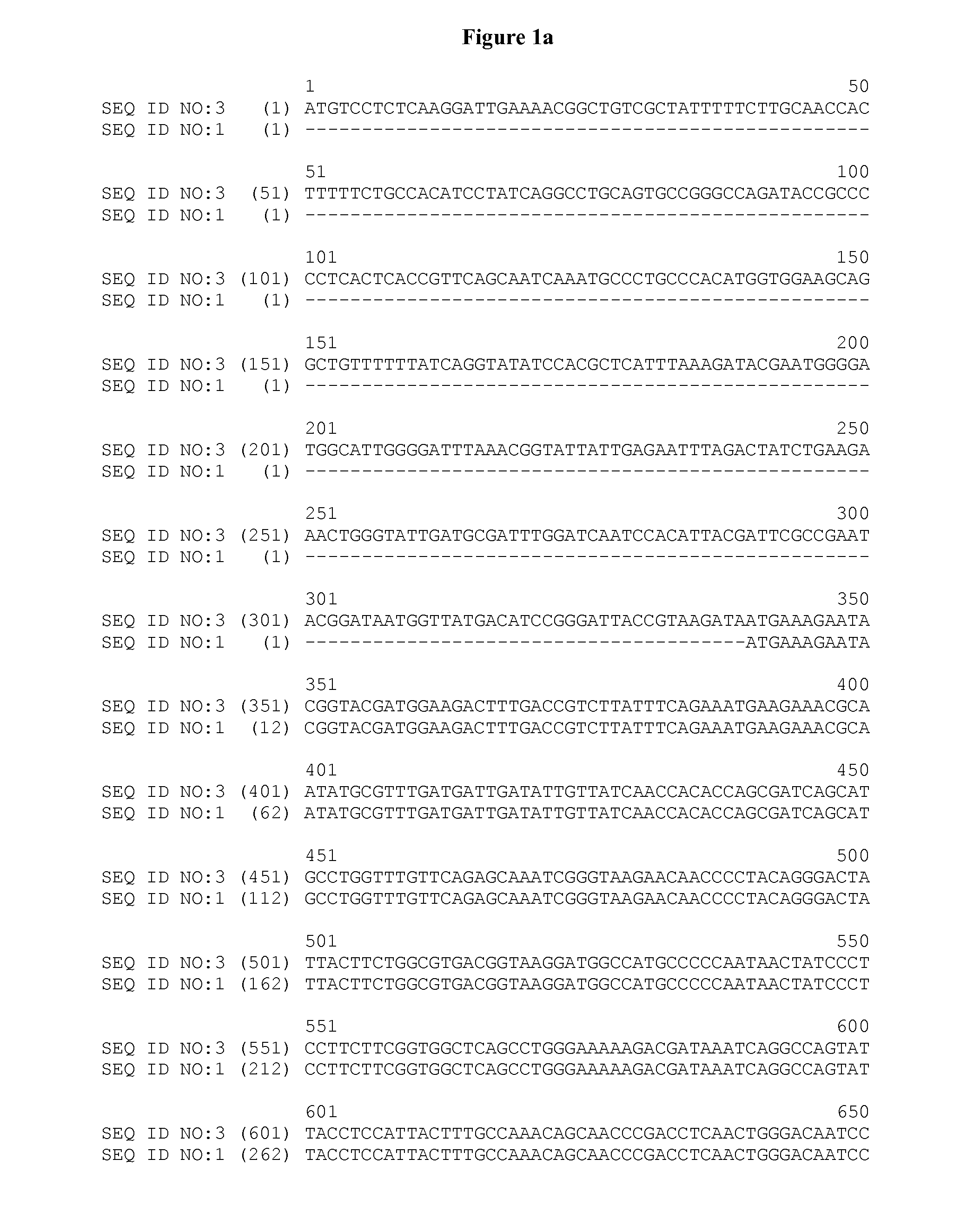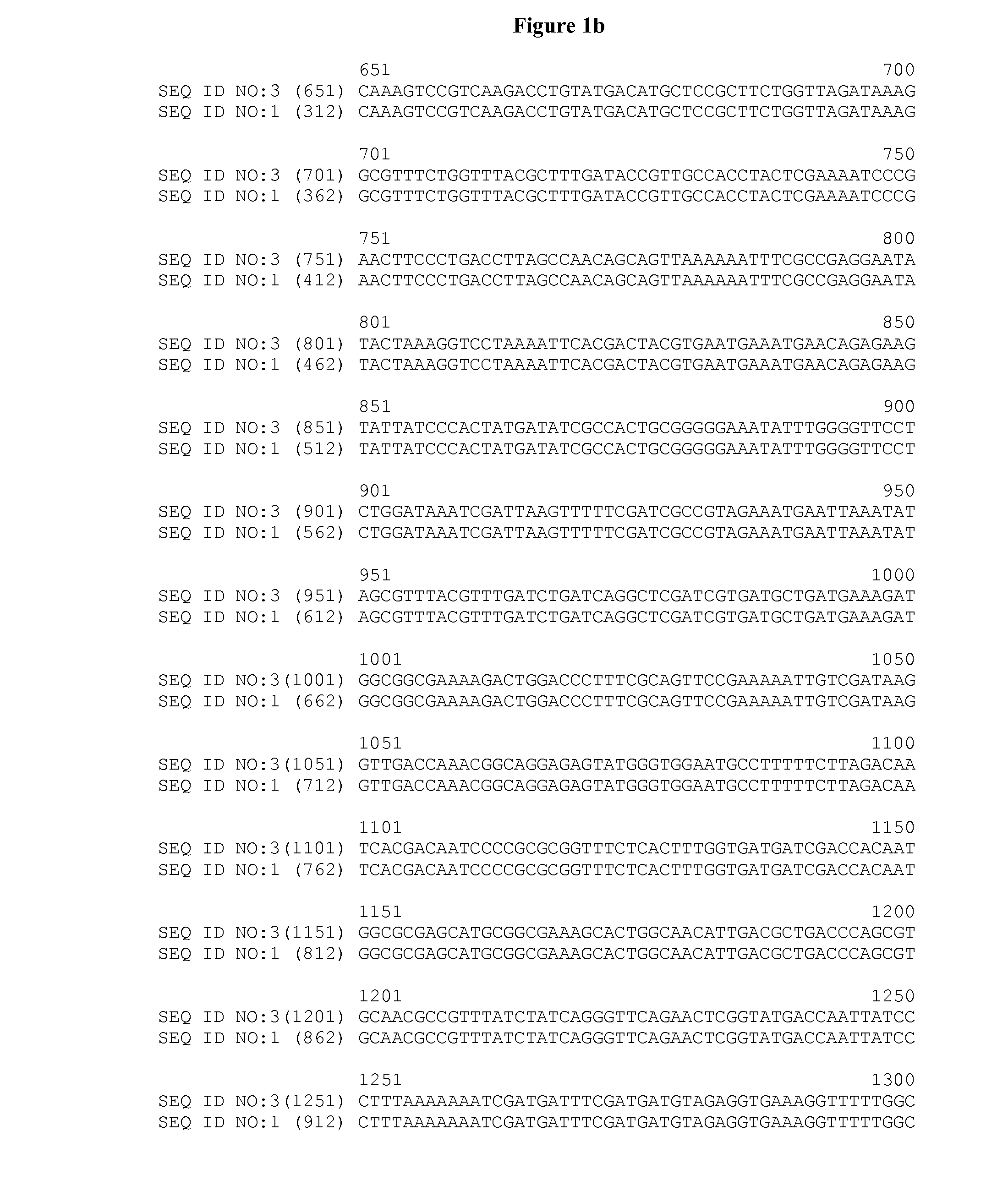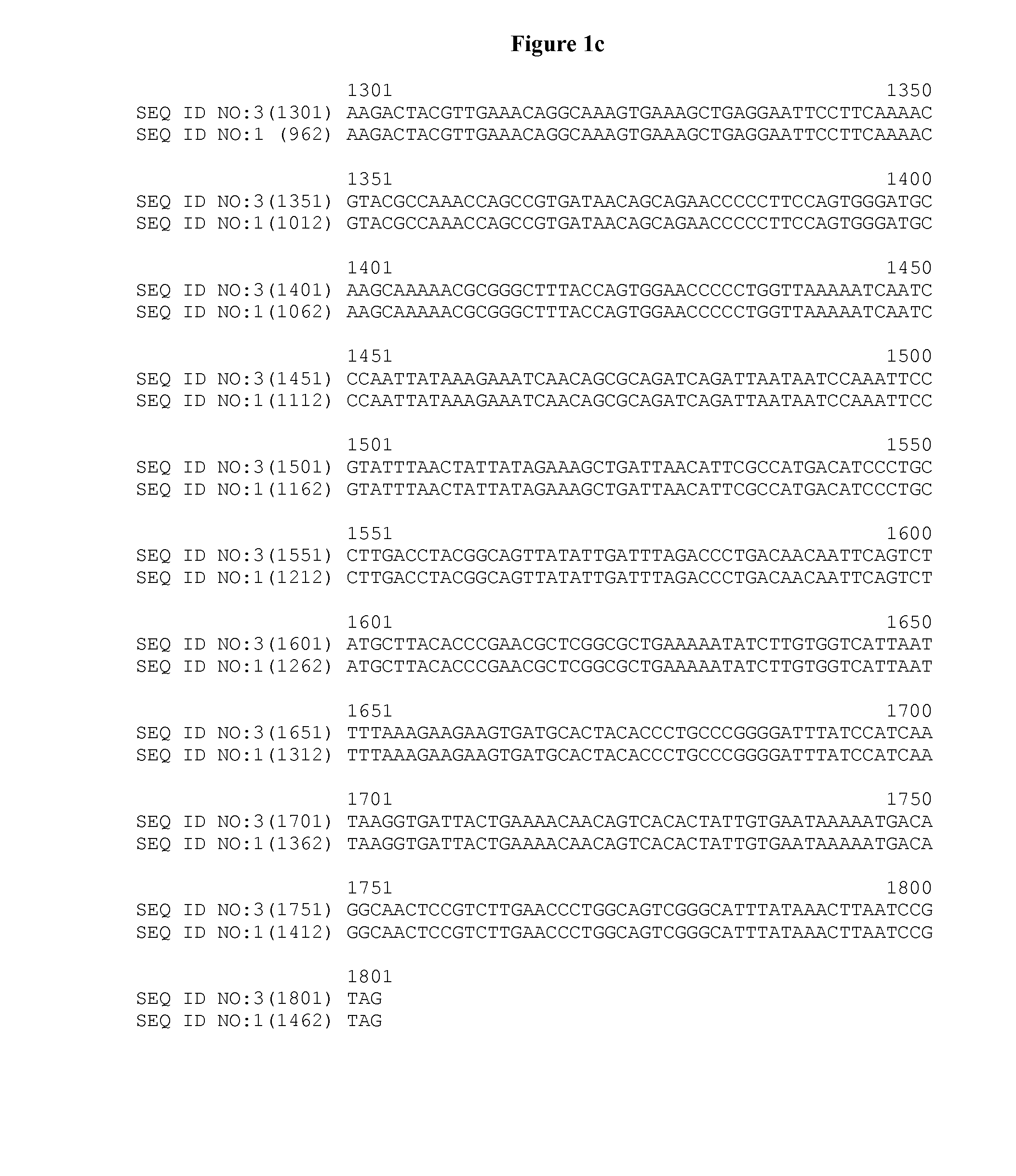Polynucleotides Encoding Truncated Sucrose Isomerase Polypeptides for Control of Parasitic Nematodes
a technology of sucrose isomerase and polypeptides, which is applied in the field of nematodes control, can solve the problems of wilting of plants, no longer economically possible to produce soybeans, and estimated $100 billion crop loss worldwide, and achieves the effect of increasing nematode resistance and increasing nematode resistan
- Summary
- Abstract
- Description
- Claims
- Application Information
AI Technical Summary
Benefits of technology
Problems solved by technology
Method used
Image
Examples
example 1
Cloning a Polynucleotide Encoding an N-Terminal Truncated Form of a Sucrose Isomerase
[0078]Approximately 0.1 μg of plasmid DNA containing the Erwinia sucrose isomerase AF279281 sequence was used as the DNA template in the PCR reaction. The primers used for PCR amplification of the truncated sucrose isomerase sequence are shown in Table 1 and were designed based on AF279281 sequence. The primer sequences described by SEQ ID NO:12 contains the AscI restriction site for ease of cloning. The primer sequences described by SEQ ID NO:13 contains the XhoI site for ease of cloning. Primer sequences described by SEQ ID NO:12 and SEQ ID NO:13 were used to amplify the truncated sucrose isomerase sequence.
[0079]The amplified DNA fragment size for was verified by standard agarose gel electrophoresis and the DNA extracted from gel The purified fragments were TOPO cloned into pCR2.1 using the TOPO TA cloning kit following the manufacturer's instructions (Invitrogen). The cloned fragments were seque...
example 2
Vector Construction for Transformation
[0080]To evaluate the function of the cloned Erwinia polynucleotide encoding an N-terminal truncated form of the sucrose isomerase encoding gene, a gene fragment corresponding to nucleotides of 1-1464 of SEQ ID NO:1 was cloned downstream of a promoter using the restriction enzymes AscI and XhoI to create the expression vectors described in Table 2 operably linked to the described promoter sequences. The syncytia preferred promoters included a soybean MTN3 promoter SEQ ID NO:7 (p-47116125) (U.S. Ser. No. 60 / 899,714), Arabidopsis peroxidase POX promoter SEQ ID NO:8 (p-At5g05340) (U.S. Ser. No. 60 / 876,416), Arabidopsis TPP trehalose-6-phosphate phosphatase promoter SEQ ID NO:9 (p-At1g35910) (U.S. Ser. No. 60 / 874,375), MTN21 promoter SEQ ID NO:10 (p-At1g21890) (U.S. Ser. No. 60 / 743,341), and At5g12170-like promoter SEQ ID NO:11 (U.S. Ser. No. 60 / 899,693). The plant selectable marker in the binary vectors described in Table 2 is a herbicide-resistant...
example 3
Generation of Transgenic Soybean Hairy-Root and Nematode Bioassay
[0081]Binary vectors RJT21, RJT22, RJT23, RJT51, RJT52, and RJT53 were transformed into A. rhizogenes K599 strain by electroporation. The transformed strains of Agrobacterium were used to induce soybean hairy-root formation using known methods. Non-transgenic hairy roots from soybean cultivar Williams 82 (SCN susceptible) and Jack (SCN resistant) were also generated by using non-transformed A. rhizogenes, to serve as controls for nematode growth in the assay.
[0082]A bioassay to assess nematode resistance was performed on the transgenic hairy-root transformed with the vectors and on non-transgenic hairy roots from Williams 82 and Jack as controls. Several independent hairy root lines were generated from each binary vector transformation for bioassay. For each transformation line, several replicated wells were inoculated with SCN according to the procedure outlined above. Four weeks after nematode inoculation, the cyst n...
PUM
| Property | Measurement | Unit |
|---|---|---|
| Fraction | aaaaa | aaaaa |
| Electrical resistance | aaaaa | aaaaa |
Abstract
Description
Claims
Application Information
 Login to View More
Login to View More - R&D Engineer
- R&D Manager
- IP Professional
- Industry Leading Data Capabilities
- Powerful AI technology
- Patent DNA Extraction
Browse by: Latest US Patents, China's latest patents, Technical Efficacy Thesaurus, Application Domain, Technology Topic, Popular Technical Reports.
© 2024 PatSnap. All rights reserved.Legal|Privacy policy|Modern Slavery Act Transparency Statement|Sitemap|About US| Contact US: help@patsnap.com










